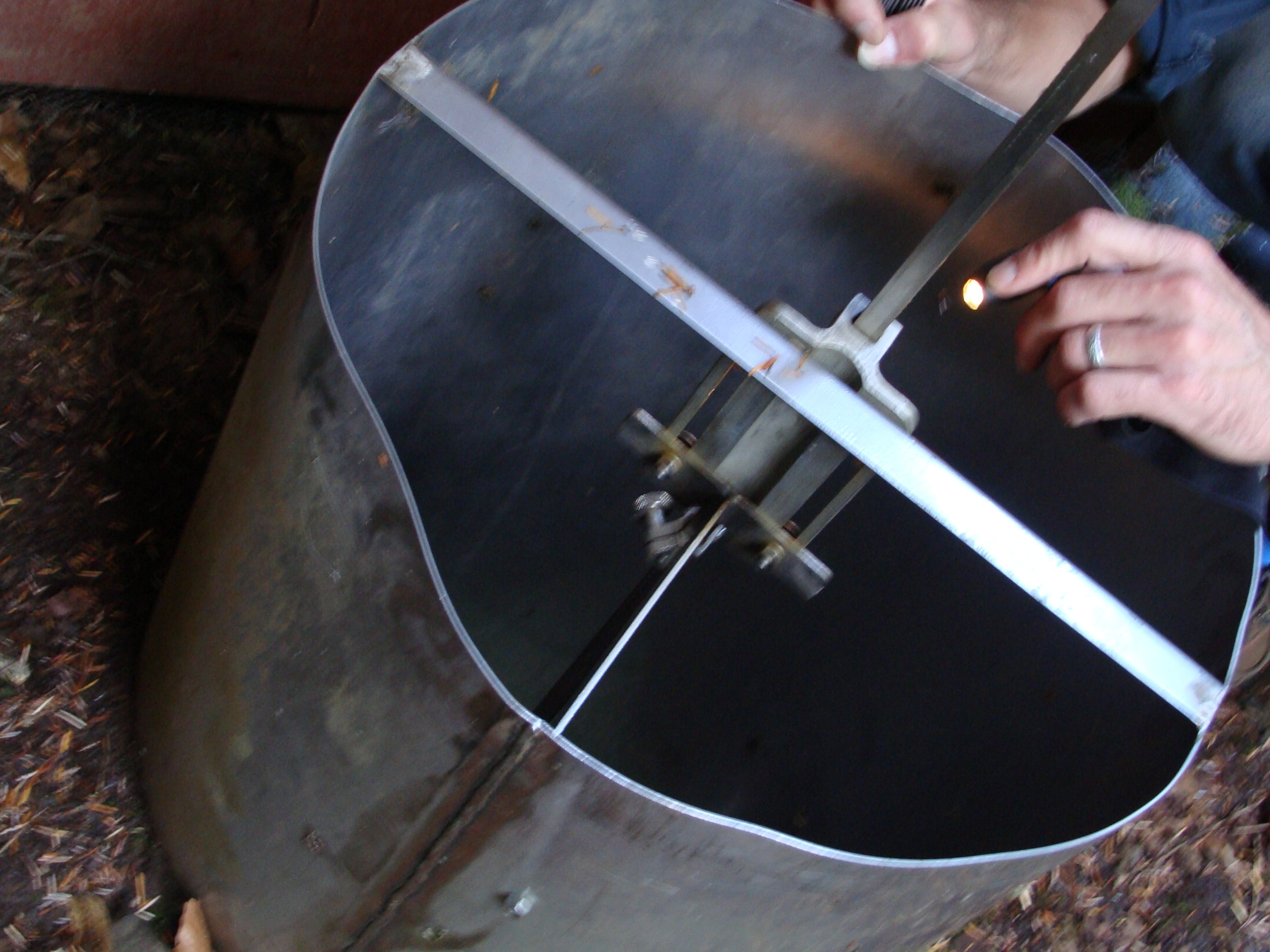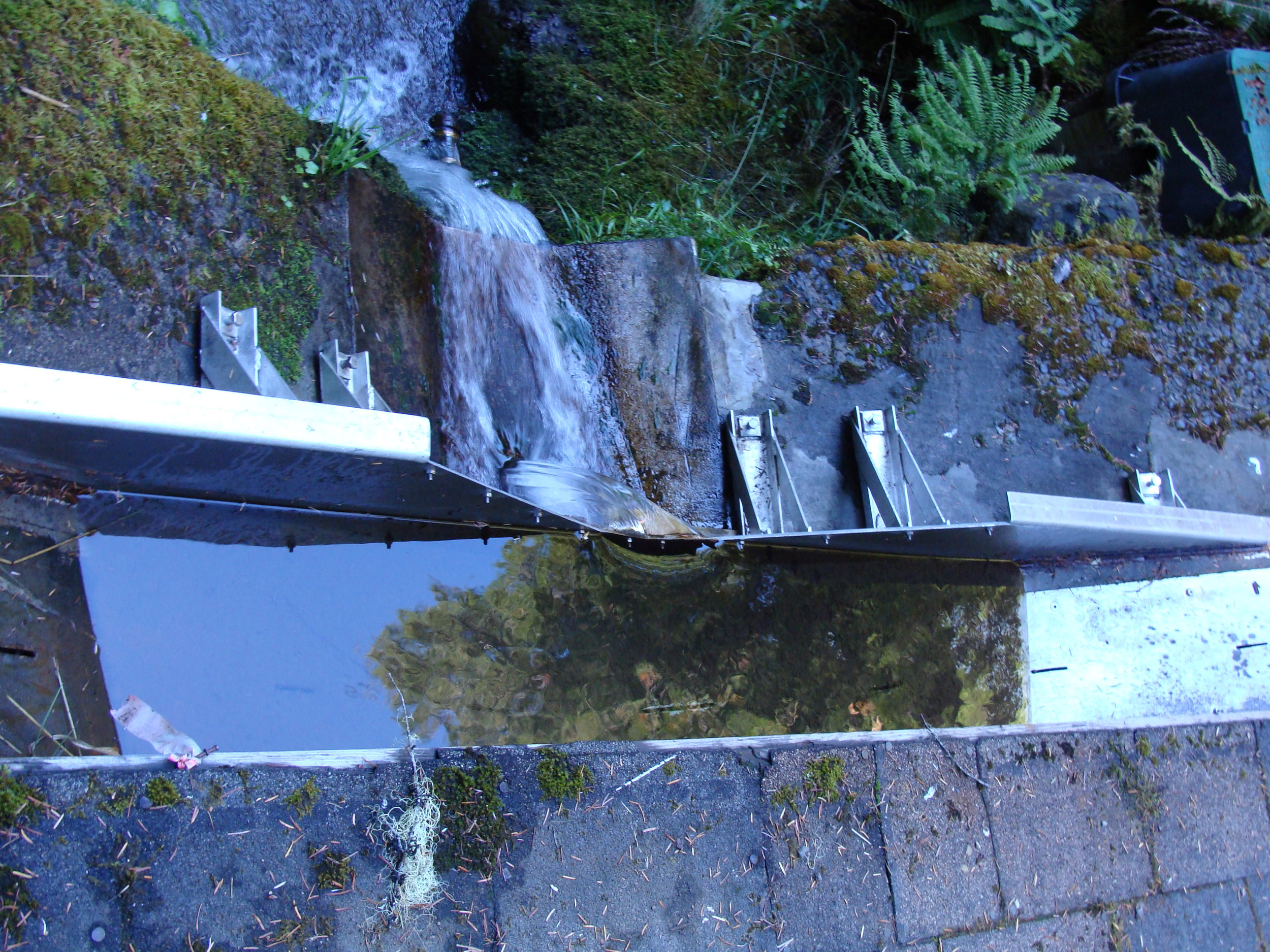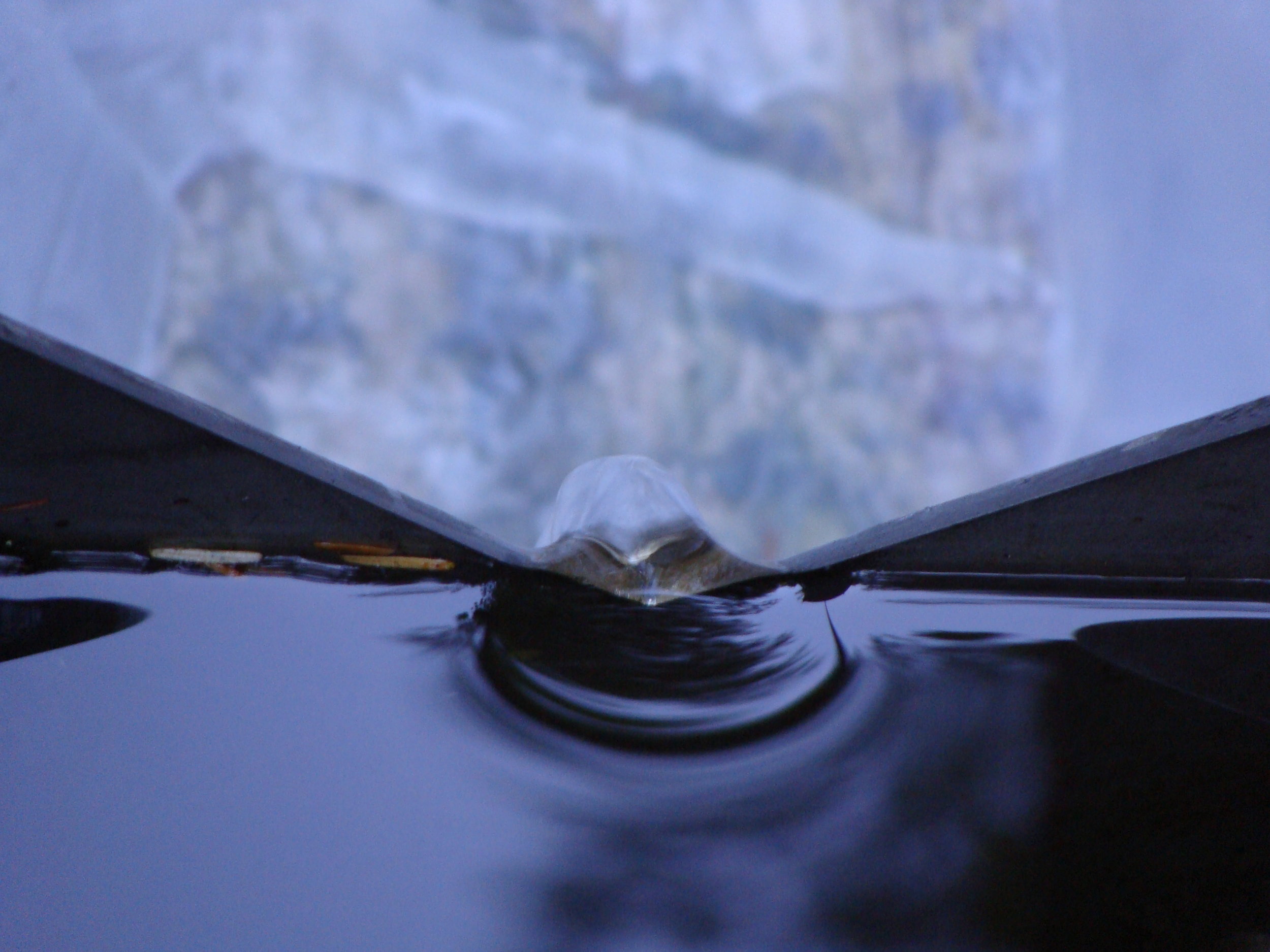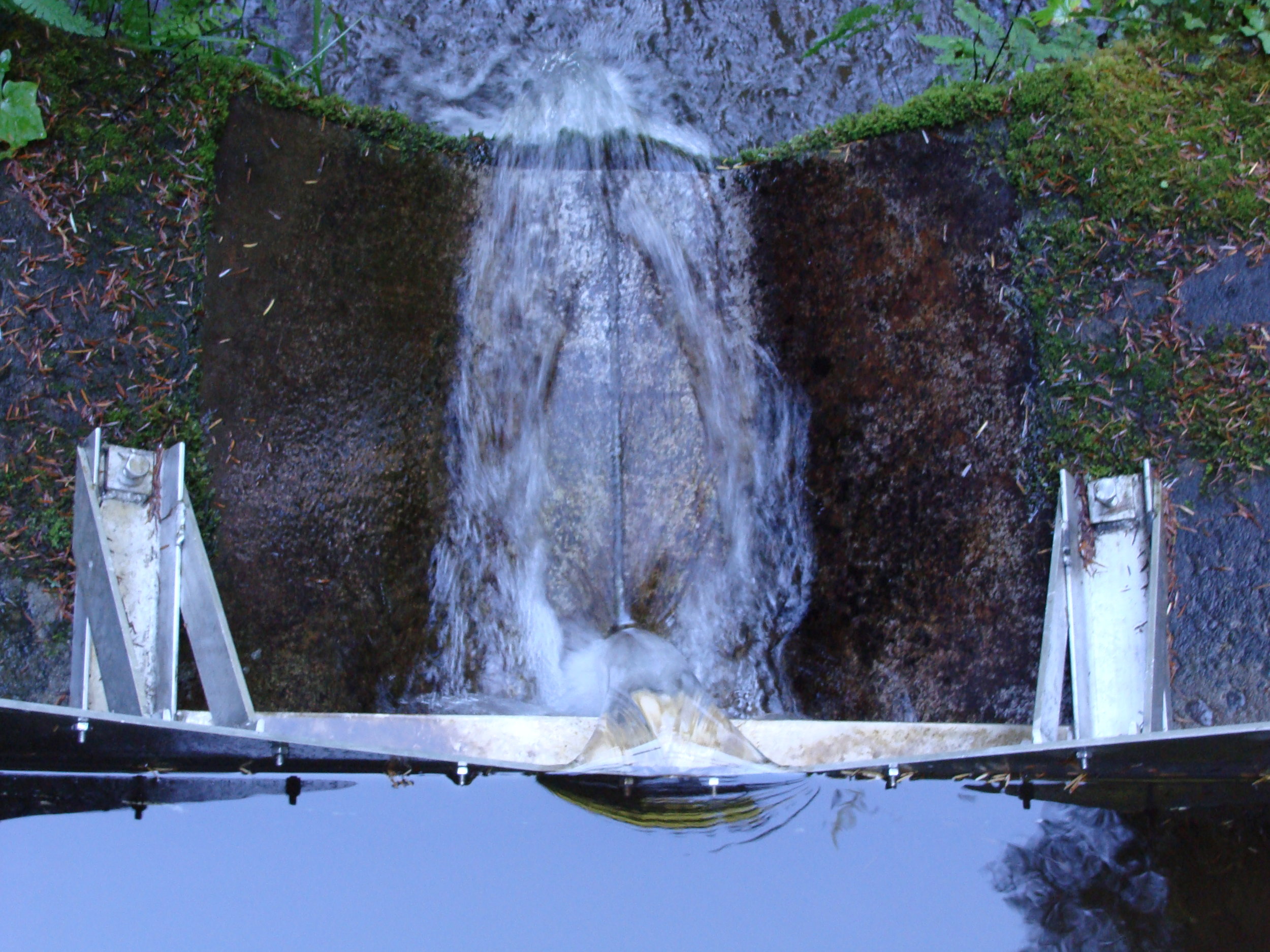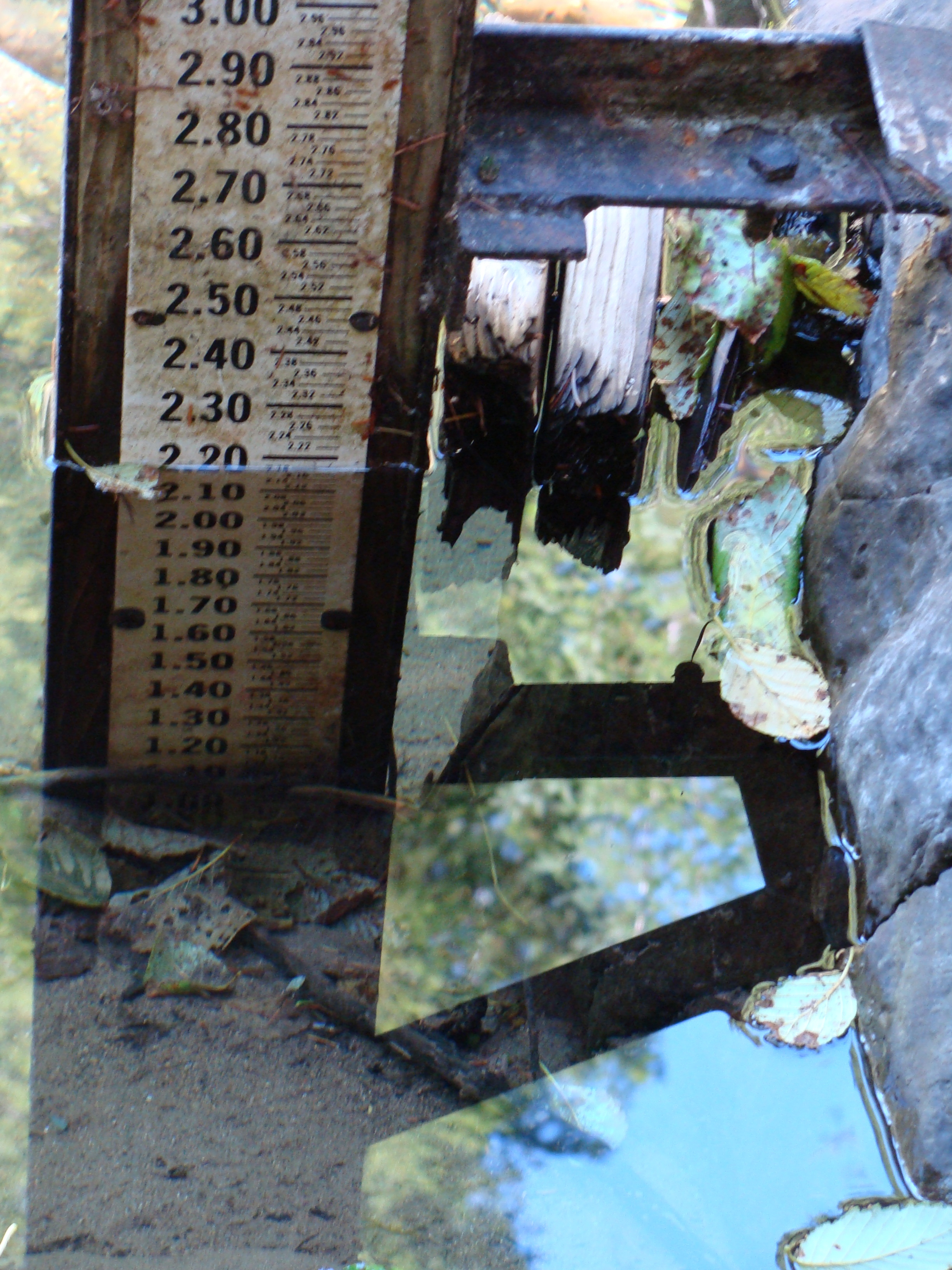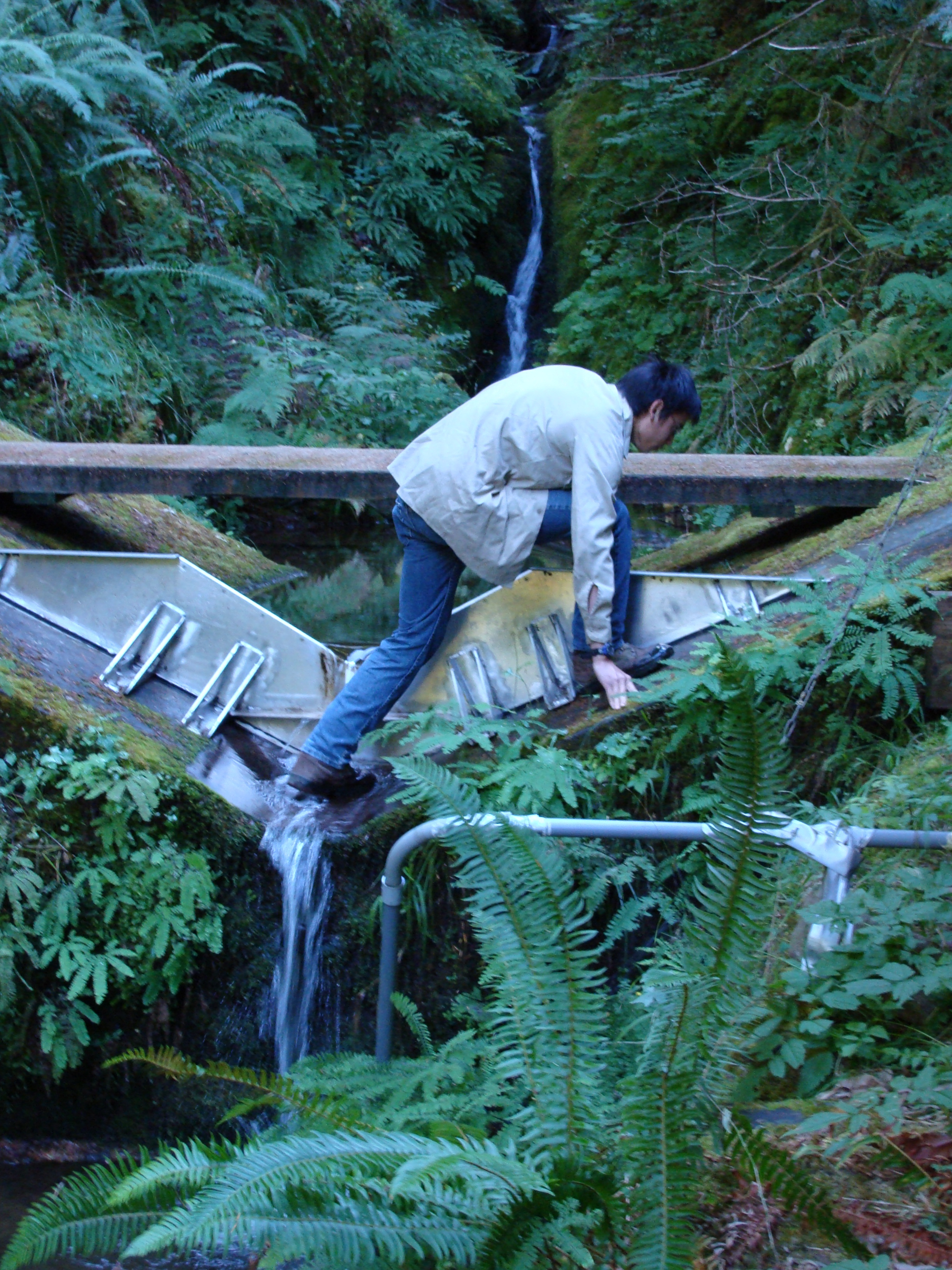As a timber cruiser, I used to enter forests with an eye for the merchantable: along a compass line, I’d use a prism (tilted on a clinometer) to determine which trees to measure. Instruments dictated my vision. What if my goal is not to get an accurate estimate of timber yields but to see the forest through the tools of visionary poets?
In 2010, while on a writing residency at H.J. Andrews Experimental Forest, I took poems from these poets into long term ecological research plots: Taigu Ryōkan, Ema Saiko, A.R. Ammons, Goran Sonnevi, Arthur Sze, Maria Melendez, Brinda Iijima and Michele Glazer. Within the log decomposition site, the Lookout Creek gravel bar, and the Blue River Face timber sale, I found eight reflection spots and went to work inspired by the above poets.
My practice sequence for each plot: 1) meander, 2) photograph, 3) pause, 4) recite, 5) imitate, 6) resist, 7) record, 8) erase, 9) research. You can see the results of my play/inquiry online at http://www.trickhouse.org/vol11/experiment/loriandersonmoseman/indexa.htm.
Gauging Stations | Poetry Primer
Of all the cylinders I admire, / it is trees that turn my head / at every gauging station / (old friends, Ryōkan would say, / “like greeting old friends”). // The hydrologist admires the hook / gauge: a still well / until its tip breaks water’s surface…/ there … now read the Vernier scale—/ a measure to bring us to zero, // to calibrate all other instruments. / Saikō might prefer the paper scroll / rolled gingerly / into its watertight cylinder. Or, the act / of tearing it // from the seismograph. / The actual inking—the needle / in fluctuation—would captivate Sonnevi / only when discharge exceeds the margins, / starts recording an inverse. // As if extreme events were a turning / back upon oneself. / Ammons would want/ the record only if he couldn’t watch/ the debris torrent rip / down the watershed: logging’s slash / recruiting snapped snags / cavorting with popped culverts. / A road destined to become a gravel bar /dumped by the main channel at a bend, / Iijima likes the mixing of weekly/ samples—three in the same jug — / and savors the later data breakdown: / a transcript divorced / from the topographical, the topical, // the visceral scramble up the tributary. / Melendez plays / with the spare PVC tubing, / bangs it so motion makes a tuba of it. / All hollows know how to sound out / the poem they got in them. // Perhaps Sze would stand beside me, / admire the trapezoidal flume, the hand / going to the V-notch—its formal / beauty foreshadowing its precision. / (Not just any surface reflects.) // My friend Glazer is always at the edge / of the sediment basin. / She neither leaps into it nor over it. / Somehow, she gets under it. / surface with enough silt / to ground our grief.



